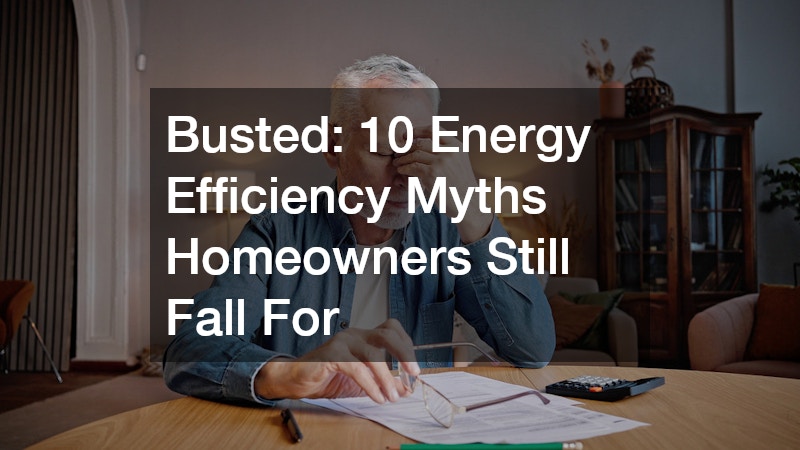When it comes to saving energy at home, there’s no shortage of advice floating around — some good, some not so much. Between well-meaning neighbors, internet “hacks,” and decades-old habits, many homeowners still cling to myths that don’t actually help reduce energy use (and might even make things worse).
Let’s break down ten of the most common energy efficiency myths and set the record straight once and for all.
Myth #1: Turning Off Appliances Stops All Energy Use
This one sounds logical — if something’s off, it’s not using power, right? Not exactly. Many appliances continue to draw small amounts of electricity even when turned off. This “phantom load” or “vampire energy” happens because of standby features like digital clocks, LED indicators, or sensors that wait for a remote signal.
Think of your TV, coffee maker, gaming console, or even your phone charger left plugged in. Each one sips electricity 24/7. It might not seem like much, but when you add it all up, it can account for up to 10% of your home’s total energy use.
The good news is, you don’t need to go around unplugging everything to fix the problem. A few smart habits can help cut down on wasted energy:
-
Use smart power strips that automatically cut power when devices aren’t in use.
-
Unplug chargers and electronics you don’t use often.
-
Look for the “Energy Star” label — many modern appliances minimize standby power consumption.
Some older or faulty devices can even draw more power than expected, which is why scheduling regular appliance service can help catch small electrical issues early. A technician can check whether your major appliances are running efficiently or if they’re using more standby power than they should. A little awareness and maintenance go a long way — and your electric bill will thank you for it.
Myth #2: Energy-Efficient Homes Always Cost a Fortune
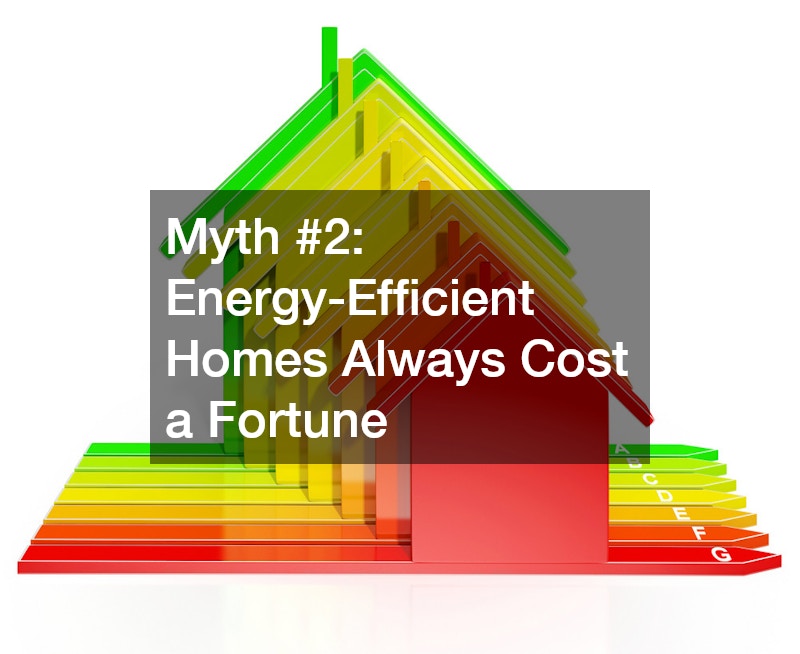
It’s easy to assume that making your home energy efficient means spending big bucks on solar panels, fancy insulation, or top-of-the-line appliances. While those upgrades can be worthwhile, energy efficiency doesn’t always require a major investment.
Simple, low-cost changes can go a long way. Things like sealing air leaks with weatherstripping, switching to LED bulbs, using programmable thermostats, or even changing HVAC filters regularly can make a real difference. These small tweaks not only save energy but often pay for themselves within months.
Even taking care of what you already have can lead to big savings. Regular ac services help systems run at peak efficiency, reducing wasted energy and preventing costly breakdowns later on. The same goes for water heater repairs — keeping your unit in good shape ensures it heats water efficiently instead of working overtime (and driving up your utility bills). Preventive maintenance like this is often far cheaper than replacing old equipment too soon.
For homeowners planning bigger upgrades, incentives and rebates can help reduce upfront costs. Many local governments and energy providers offer programs for upgrading insulation, installing smart thermostats, or switching to efficient water heaters.
So no, energy efficiency isn’t just for people with deep pockets — it’s for anyone who wants a more comfortable home, fewer maintenance headaches, and lower monthly bills.
Myth #3: All Heating Oils Are the Same
If you use heating oil, you might think one type is just as good as another. But not all home heating oils are created equal. The quality, composition, and even the environmental impact can vary significantly between products.
Traditional heating oil is derived from petroleum and can produce higher emissions. However, many companies now offer blends with bio-based components — known as biodiesel or bioheat — made from renewable resources like soybean oil or recycled cooking oil. These blends burn cleaner, reduce carbon emissions, and can even extend the life of your furnace when properly maintained.
The bottom line: it’s worth knowing what kind of heating oil you’re using. Ask your provider about cleaner options that fit your system and region. You might be surprised at how much more efficient and eco-friendly your heating can become with just a small switch.
Myth #4: Bigger HVAC Systems Mean Better Efficiency
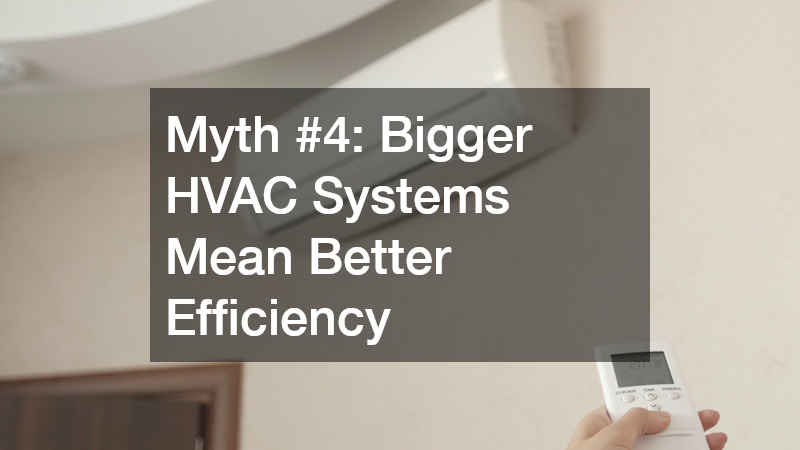
When it comes to heating and cooling, bigger isn’t always better. Many homeowners believe that a larger HVAC system will cool or heat their home faster and more efficiently. In reality, an oversized system can cause more problems than it solves.
Here’s why: an HVAC unit that’s too powerful will cycle on and off more frequently, known as “short cycling.” This wastes energy, creates uneven temperatures, and puts extra strain on the equipment — shortening its lifespan. Plus, it doesn’t remove humidity as effectively, which can leave your home feeling clammy instead of comfortable.
The key to true efficiency is proper sizing. HVAC professionals calculate the right system capacity based on your home’s square footage, insulation, number of windows, and even local climate. When your system fits your home, it runs longer, steadier cycles — saving energy and improving comfort.
And if your current system isn’t performing as it should, scheduling timely HVAC repairs can make a big difference. Fixing airflow issues, refrigerant leaks, or worn-out components can restore efficiency without the need for a full replacement. Sometimes, maintaining what you already have is far more cost-effective than upsizing.
So next time you’re upgrading your system, resist the temptation to size up. Go for “right-sized” instead of “super-sized” — your comfort, budget, and energy bill will thank you.
Myth #5: Propane Heating Is Always Inefficient or Outdated
Propane sometimes gets a bad rap as an old-fashioned or inefficient heating option, but that reputation is undeserved. In fact, propane heating systems today are among the most efficient on the market.
Modern propane furnaces can achieve efficiency ratings of over 90%, converting nearly all the fuel into usable heat. Propane also burns cleaner than oil, producing fewer greenhouse gas emissions. It’s a reliable and versatile energy source that can power everything from heating systems to water heaters, stoves, and dryers.
Another plus? Propane systems are often ideal for homes in rural areas or locations without access to natural gas lines. They offer dependable heat even during power outages — something electric systems can’t do. Reliable propane delivery services make it easy for homeowners to maintain a steady supply, ensuring consistent warmth throughout the winter without interruption. Many providers even offer automatic refill programs or tank monitoring to help you avoid running low when you need heat the most.
In short, propane isn’t a thing of the past. It’s a flexible, efficient, and eco-conscious heating solution that continues to evolve with modern technology and convenience.
Myth #6: New Homes Don’t Need Energy Upgrades
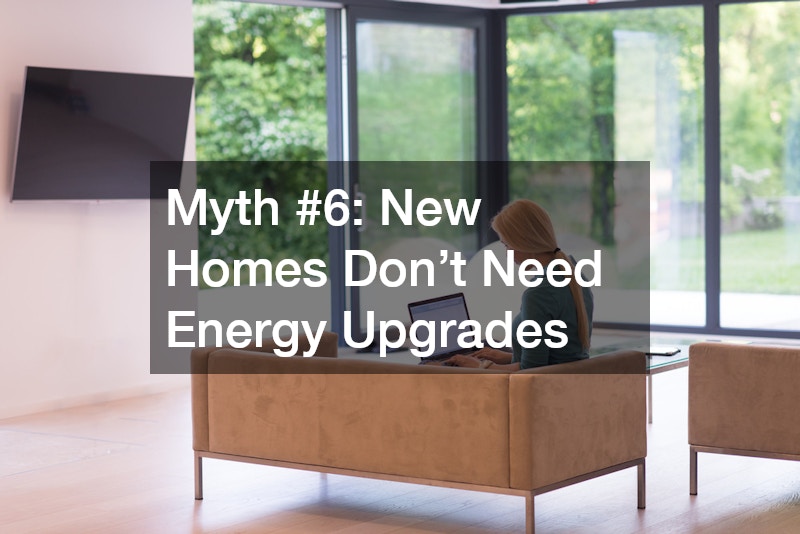
A new home might look sleek, modern, and efficient — but that doesn’t mean it’s as energy-smart as it could be. Many new builds focus on style and layout more than long-term energy performance.
Some builders meet only the minimum code requirements for insulation or windows, which means there’s still room for improvement. Energy audits on newer homes often reveal air leaks, underperforming HVAC systems, or missed insulation spots that can add up to wasted energy. Even a brand-new system might not be operating at peak efficiency right out of the gate.
Here are a few energy upgrades even new homeowners should consider:
-
Adding attic insulation or sealing ducts to prevent heat loss.
-
Installing a smart thermostat for better temperature control.
-
Upgrading to more efficient water heaters or LED lighting.
If you’re unsure about your HVAC system, consulting experienced HVAC companies can help. They can perform a thorough inspection, recommend improvements, and ensure your system runs efficiently — saving energy and reducing future repair needs.
Even small changes like these can lead to better comfort, lower energy bills, and a home that truly lives up to its modern potential — no matter how new it is.
Myth #7: Windows Are the Only Source of Heat Loss
It’s true that windows can leak heat, especially older single-pane ones. But they’re far from the only culprit. Walls, ceilings, doors, and even floors can contribute just as much — sometimes more — to overall heat loss in a home.
A lot of the problem comes down to insulation. If your attic or basement isn’t properly insulated, heat can escape quickly, forcing your heating system to work harder. Air leaks around doors, vents, and light fixtures make matters worse. Even your roof can play a role — older or poorly insulated roofing can allow warmth to slip out, affecting both comfort and energy bills.
Here are a few ways to keep heat in and drafts out:
-
Seal gaps around windows, doors, and baseboards.
-
Add or upgrade insulation in the attic, walls, and crawl spaces.
-
Use door sweeps or weatherstripping for an extra seal.
If your roof shows signs of wear or isn’t as energy-efficient as it should be, consulting roofing contractors can help. Proper roofing maintenance or upgrades not only prevent leaks but also improve insulation, keeping your home warmer in winter and cooler in summer.
Upgrading windows is a smart move, but it’s just one piece of the puzzle. Real energy efficiency comes from addressing your entire home’s thermal envelope — from the roof to the floors.
Myth #8: Hand Washing Dishes Uses Less Energy Than a Dishwasher
Many people still think hand washing dishes is the greener option, but modern dishwashers have flipped the script. Today’s energy-efficient models actually use far less water and power than washing by hand.
Here’s a fun fact: an Energy Star–rated dishwasher uses around 3–5 gallons of water per cycle. Washing the same load by hand can easily use up to 20 gallons or more. Plus, dishwashers use less hot water overall — which means your water heater doesn’t have to work as hard.
To get the best results:
-
Skip pre-rinsing dishes; just scrape off large food bits.
-
Run full loads instead of half loads.
-
Use the “eco” or “energy saver” cycle when possible.
Of course, even the most efficient dishwasher can lose performance over time. Scheduling routine dishwasher repairs or maintenance ensures your machine runs efficiently, saving both energy and water while avoiding unexpected breakdowns.
So, if you’ve been scrubbing dishes to “save energy,” you can put that sponge down guilt-free. Your dishwasher’s got this — and with a little care, it’s doing a better job than you think.
Myth #9: Smart Devices Use Too Much Power to Be Worth It
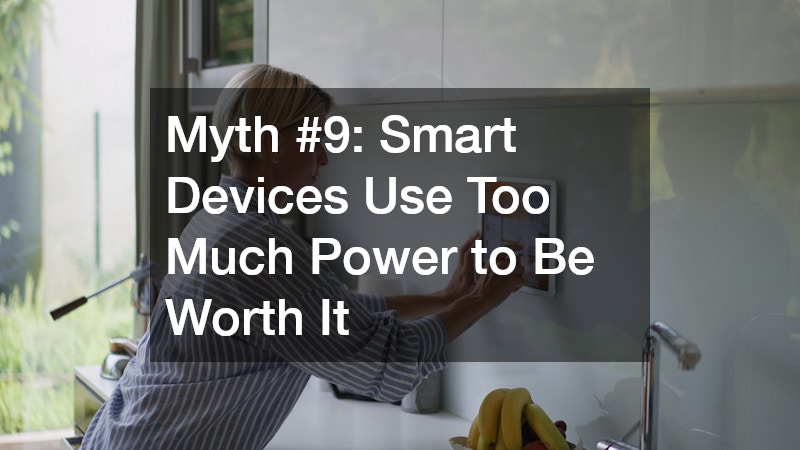
At first glance, smart thermostats, plugs, and appliances seem like more gadgets adding to your power bill. But most of these devices are designed to reduce energy use, not increase it.
Smart thermostats, for instance, learn your habits and automatically adjust temperatures to save energy when you’re away. Smart plugs can cut power to idle electronics. Even smart lighting systems can sense occupancy and daylight levels, dimming or shutting off automatically when not needed.
The energy they consume to stay connected (like running Wi-Fi or standby sensors) is minimal compared to what they save. In fact, a smart thermostat alone can reduce heating and air conditioning costs by up to 10% annually.
So, if you’re hesitant to “go smart” because you think it’ll drain power, think again. These devices are built for efficiency and often pay for themselves through energy savings in just a year or two.
Myth #10: Leaving Lights On Saves Power During Short Breaks
We’ve all heard this one — “don’t turn the lights off, it takes more energy to turn them back on!” That might have been true decades ago with old fluorescent bulbs, but it doesn’t apply to modern lighting.
Today’s LED bulbs use so little energy and turn on instantly, meaning you save power every time you flip the switch off. In fact, even turning lights off for a minute or two can save energy compared to leaving them on.
If you find yourself constantly forgetting to turn lights off, motion sensors or smart bulbs can help. They detect when a room is empty and shut off automatically — no effort required.
In short: if you’re not in the room, turn off the lights. You’ll save energy, extend bulb life, and lower your electric bill without any downside.
Final Thoughts
Energy efficiency doesn’t have to be confusing or expensive — it’s about understanding how your home really uses (and sometimes wastes) energy.
By busting these common myths, you can make smarter choices that actually make a difference. Whether it’s unplugging devices, right-sizing your HVAC, or trusting your dishwasher to do the job, every small change adds up to a more efficient, comfortable, and budget-friendly home.
Remember: the best energy savings come not from doing everything, but from doing the right things.
